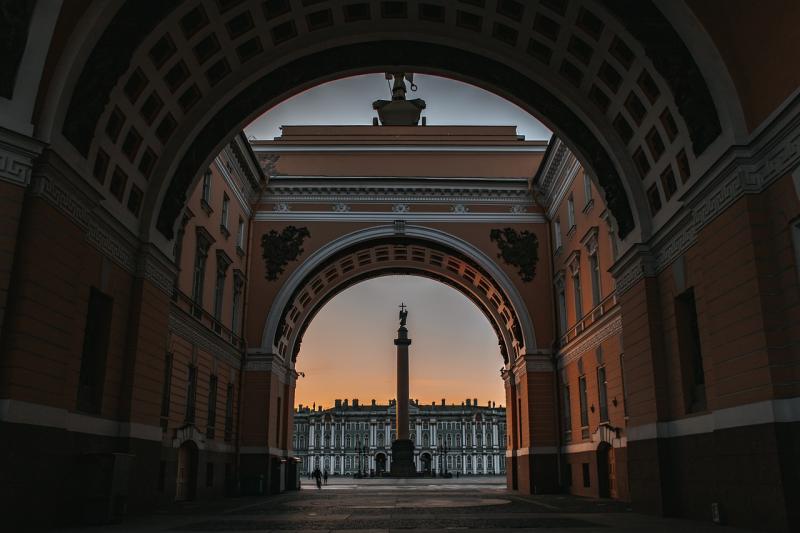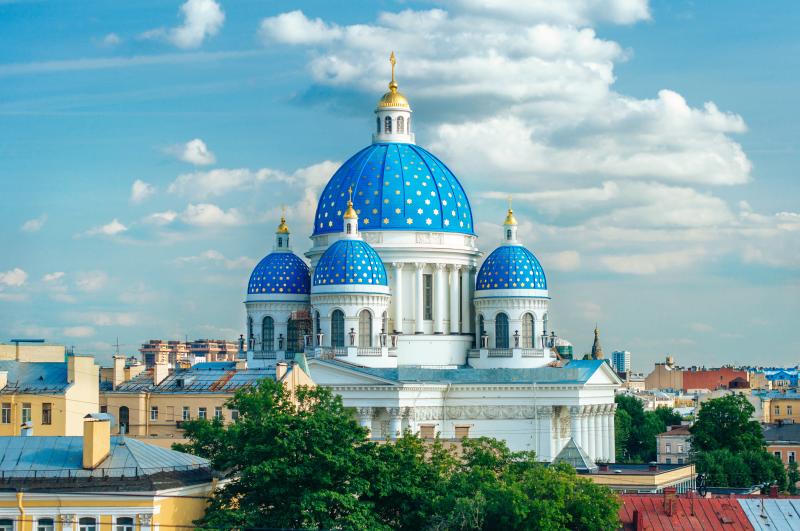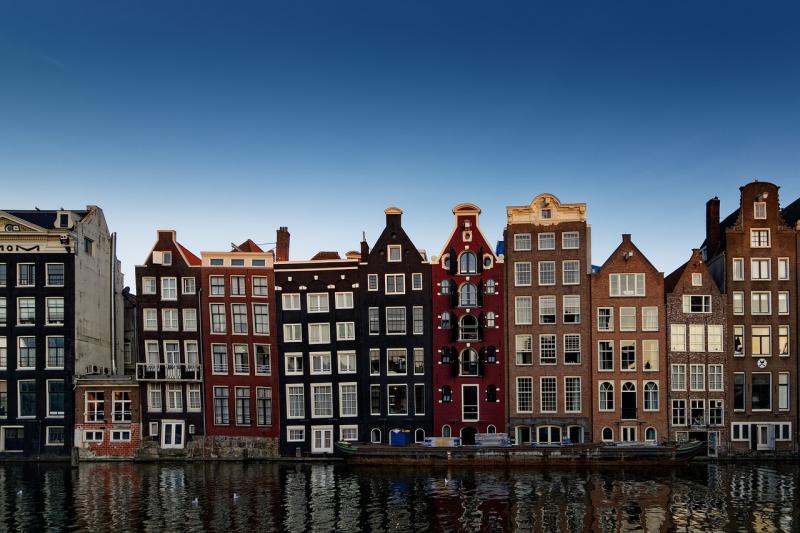View It
Visit It
St. Petersburg
Russia
Visit St. Petersburg
St. Petersburg, Russia, often referred to as the cultural capital of the country, offers an enchanting experience for travelers seeking a blend of historical grandeur and artistic expression. Founded by Tsar Peter the Great in 1703, this city has been at the forefront of Russian history, witnessing the rise and fall of empires, revolutions, and the enduring legacy of the Russian aristocracy. The city's layout, with its intricate web of canals interlaced with baroque bridges, draws comparisons to Venice, while the majestic Neva River adds to its picturesque charm.
A visit to St. Petersburg would be incomplete without exploring its vast array of cultural institutions. The Hermitage Museum, housed in the opulent Winter Palace, is a treasure trove of art and artifacts. With over three million items in its collection, including masterpieces by Leonardo da Vinci, Rembrandt, and Michelangelo, it offers an unparalleled glimpse into the artistic achievements of humanity. Equally impressive are the Russian Museum, which showcases a comprehensive collection of Russian fine art, and the Mariinsky Theatre, known for its world-class opera and ballet performances.
St. Petersburg is also famous for its architectural marvels. The city skyline is dominated by the colorful onion domes of the Church of the Savior on Spilled Blood, which stands as a memorial to Tsar Alexander II. The church's intricate mosaics and its dramatic location along the Griboedov Canal make it a visual spectacle. Another iconic structure is the Peter and Paul Fortress, the original citadel of St. Petersburg, whose spire reaches skyward from the Zayachy Island along the Neva River. The fortress houses the Peter and Paul Cathedral, the burial place of Russian tsars, including Peter the Great and Catherine the Great.
Throughout the year, St. Petersburg transforms with the seasons, each offering a unique charm. The famous "White Nights" of summer, when the sun barely sets and the city is alive with festivals and nightlife, contrast sharply with the snowy, quiet winters that blanket the city's historic buildings and streets in sparkling white. Whether it's the lush greenery of the Summer Garden in full bloom or the frozen rivers and canals that turn into impromptu ice rinks, St. Petersburg captivates with its timeless beauty and vibrant cultural scene.
St. Petersburg Monthly Weather Conditions
LOW
TEMP
HIGH
TEMP
DAYS OF PRECIP.
January
21°F
30°F
18
February
21°F
30°F
11
March
24°F
37°F
13
April
34°F
50°F
13
May
45°F
60°F
14
June
53°F
68°F
11
July
57°F
72°F
11
August
57°F
68°F
14
September
46°F
60°F
12
October
37°F
50°F
12
November
30°F
37°F
13
December
23°F
32°F
18
Need to Know Before You Go To St. Petersburg
Find your Next Adventure in St. Petersburg
Explore St. Petersburg
- Founded by Tsar Peter the Great: St. Petersburg was founded by Russian leader Peter the Great on May 27, 1703. He named it after his patron saint, the apostle Saint Peter. The city was intended to be a window to the West and a way to modernize Russia by having a seaport capable of trading with other European nations.
- City of Bridges: St. Petersburg is often referred to as the "Venice of the North" because of its many waterways and over 800 bridges. The city's intricate network of canals and the Neva River have earned it this romantic nickname, making it a picturesque destination.
- The Hermitage Museum: One of the largest and oldest museums in the world, the Hermitage was founded in 1764 by Catherine the Great and has been open to the public since 1852. Its collections comprise over three million items, including the largest collection of paintings in the world.
- White Nights: Due to its northern geographic location, St. Petersburg experiences the natural phenomenon of the "White Nights," where twilight lasts all night from late May to early July. This period is celebrated with numerous cultural events, including the famous Scarlet Sails celebration, a massive public gathering with fireworks and a ship with scarlet sails sailing down the Neva River.
- The Mariinsky Theatre: Opened in 1860, the Mariinsky Theatre is a historic theater of opera and ballet in St. Petersburg and has been the home of many of Russia's most famous performers and performances, including works by Tchaikovsky and Rimsky-Korsakov.
- Peterhof Palace: Often referred to as the "Russian Versailles," Peterhof Palace is famous for its array of fountains powered by natural springs and gravity. It was designed by Peter the Great and is a testament to the lavish lifestyle of Russia's imperial rulers.
- The Siege of Leningrad: During World War II, the city, then known as Leningrad, was besieged by Nazi Germany from September 1941 to January 1944. Despite severe starvation and harsh winters, the city did not fall. The resilience of the city's defenders is commemorated in various monuments and museums across the city.
- Literary Greats: St. Petersburg is the setting for many famous Russian literary works. Fyodor Dostoevsky’s "Crime and Punishment" and many of Alexander Pushkin’s poems and stories take place in this historic city. It's a place of pilgrimage for literature enthusiasts.
- The Bronze Horseman: An iconic symbol of the city, the Bronze Horseman is an equestrian statue of Peter the Great commissioned by Catherine the Great. It was created by French sculptor Étienne Maurice Falconet and unveiled in 1782. The statue is mentioned in Alexander Pushkin's famous poem, "The Bronze Horseman."
- Subway Depth: The Saint Petersburg Metro is one of the deepest subway systems in the world. The city's geology required that the metro be built deep underground, with the Admiralteyskaya station being one of the deepest in the world at about 86 meters below ground.
Featured Picture Gallery

Palace Square is Known as St. Petersburg's Main Square

Explore the Local Architecture Along the Neva River

Visit Peterhof Palace to See the Beautiful Golden Statues

Explore the Great Architecture of St. Petersburg
Explore Similar Locations
Amsterdam

Dublin

Budapest

Stockholm

